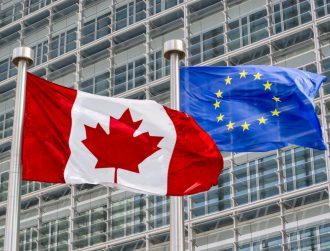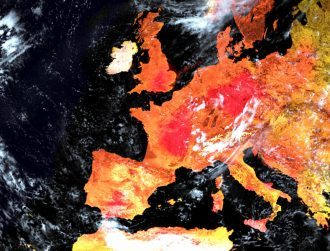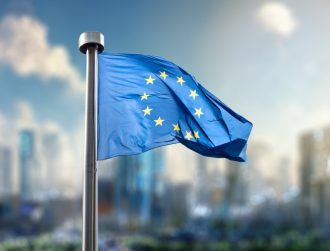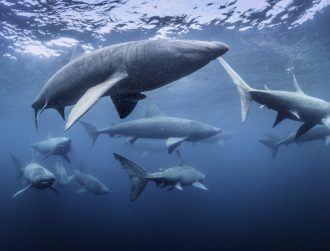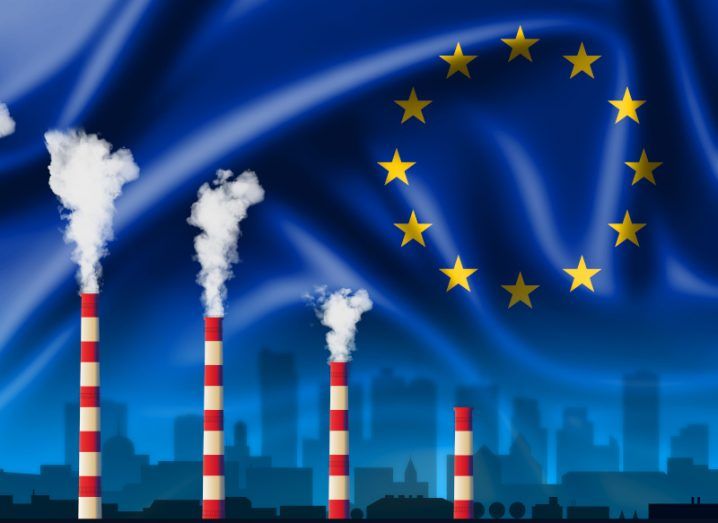
Image: © leestat/Stock.adobe.com
The European Commission has set out a key milestone towards hitting net-zero emissions by 2050, but many feel the plan focuses too much on untested tech and not enough on circularity.
The European Commission yesterday (6 February) recommended that the EU aims for a 90pc net reduction in greenhouse gas emissions by 2040 to be able to meet its target of net-zero emissions by 2050.
This 90pc reduction compared to 1990 levels includes the full implementation of 2030 targets and a new framework for 2040, which includes an 80pc reduction in fossil fuel use, the phase out of coal and the use of carbon capture utilisation and storage (CCU and CCS).
The 2030 target aims to reduce emissions by 55pc. An EU assessment of member states’ national energy and climate plans published in December last year showed that current targets, if fully implemented, would result in a reduction that is 4pc shy of the current target at 51pc. As of 2023, emissions had fallen by 32.5pc since 1990, highlighting the “need for a change of pace”.
“The emissions reduction until 2030 now needs to proceed at almost triple the average annual reduction achieved over the last decade,” the report states.
The plan has been published under the EU Climate Law regulation that 2040 targets must be set within six months of the UN global stocktake, which took place at COP28 last year.
The stocktake revealed that progress has been far too slow, with national commitments falling well short of emissions reductions targets. Globally, emissions need to be cut by about 43pc by 2030 compared to 2019 levels to limit global heating to 1.5 degrees Celsius, as agreed at COP21 in Paris in 2015.
Against this background of missed targets, the goal of 90pc seems particularly challenging.
What’s in the 2040 climate plan?
To achieve emissions reductions, the Commission plans to focus on the EU’s “existing industrial strengths” including wind power, hydropower, batteries, electric vehicles and heat pumps. As part of this, carbon pricing and access to finance are “critical”, it says.
“The Commission will set up a dedicated taskforce to develop a global approach to carbon pricing and carbon markets. Europe will also need to mobilise the right mix of private and public sector investment to make our economy both sustainable and competitive.”
The plan aims to ensure the “long-term competitiveness of the EU economy” by investing in industries and technologies that are “needed for the transition to climate neutrality”.
“Europe has already made a strategic decision to invest in an innovative, sustainable and globally competitive economy, centred around agile clean industries,” said Maroš Šefčovič, executive VP of the European Commission for the European Green Deal.
“We see industrial leadership and just transition as two sides of the same coin. As a strong global player in net-zero technologies, the EU will continue to keep fairness and solidarity front and centre of the European Green Deal.”
One of the key technologies under focus is carbon capture and storage (CCS). The Commission proposes that the EU develops 280m tonnes of storage capacity per year by 2040, up from 50m per year by 2030. It aims to achieve this by investing in research and industrial projects in the sector, and by working with international partners to harmonise reporting on carbon management activities.
The independent Climate Action Tracker criticised the new plan for its heavy reliance on CCS, saying that it “continues dependency on fossil fuel and is absolutely not needed in the power sector”.
CCS is expensive, involves complex engineering challenges and has not yet been proven scalable to needed levels.
“Instead of preventing emissions by prioritising cost-effective and safe solutions, such as circularity and material and energy efficiency, the Commission decided to gamble on carbon capture to achieve the 2040 target,” said Riccardo Nigro, a senior policy officer at the European Environmental Bureau.
“The role of carbon capture is to support climate crisis mitigation through a targeted use, not to turn a problem into a commodity.”
Digging a hole with agriculture
In light of recent protests by farmers throughout Europe because of the increased pressures on their livelihoods – including, they argue, from environmental policies – the Commission’s plan for agriculture was keenly anticipated.
“Although reaching the emissions cuts required from agriculture looks achievable when looking at the evolution over the past three decades, the lack of substantial progress in recent years is a concern, calling for a gear change,” the plan states.
According to Reuters, a draft of the plan included a target for agriculture to reduce non-CO2 emissions by 30pc by 2040 compared to 2015 levels. However, this has been removed from the final draft.
The European Environmental Bureau believes that the Commission has “dropped the ball” on agriculture. “Failure to set an ambitious emission reduction target for the agricultural sector and encourage holistic solutions rather than partial technofixes will not only hinder Europe in achieving its climate goals but will put further pressure on farmers, who are already the first to suffer the impacts of the climate and biodiversity crises, endangering their livelihoods and incomes.”
Cost of inaction
The Commission’s plan provides important context for the need to ramp up climate action, as temperatures continue to rise, and extreme weather events increase in scale and frequency.
“This is happening alongside interrelated challenges of biodiversity loss and natural resource depletion,” the Commission states. “Unsustainable use of natural resources, including water, raw materials and land, increase[es] the risk of crossing further planetary boundaries and decreasing the stability and resilience of natural and human systems.
“This reduces their capacity to both mitigate and adapt to climate change and leads to further negative impacts.”
The Commission says that estimates of the global cost of the climate crisis reaching 10-12pc of GDP by the end of the century are conservative. “Looking forwards, the cost of unmitigated climate change will greatly exceed the cost of reducing GHG emissions, both in magnitude and extent.
“A growing number of analyses and estimates point to the high costs already incurred now by our economies due to floods, droughts, heatwaves and other climate change-related events. And this is without taking into account the human suffering caused by these events.”
A critical response
“The proposed 90pc net reduction of greenhouse gas emissions by 2040 is a narrowly competent effort towards climate action,” summed up the European Environmental Bureau.
The Climate Action Tracker labelled the new plan as “insufficient” to meet the goal of limiting global heating to 1.5 degrees Celsius. “The EU is continuing to fail to contribute its fair share to global climate action, and should adopt at least a 95pc reduction by 2040 and substantially increase its climate finance support to countries in the Global South,” it notes.
One of its criticisms is that the 2040 plan does not include specific timelines for the phase out of all fossil fuels, the most effective way to limit global heating to safer levels.
“The case for climate action is beyond doubt and requires planning now,” said Wopke Hoekstra, European commissioner for climate action. “Going forward, we will have to stand more firmly on two legs: a safe and healthy climate for all to live in, and a strong, resilient economy, with a bright future for business and a just transition for all.”
The plan is still up for debate. European elections will be held this year, with a new Commission and Parliament tasked with passing a final set of targets.
Find out how emerging tech trends are transforming tomorrow with our new podcast, Future Human: The Series. Listen now on Spotify, on Apple or wherever you get your podcasts.

